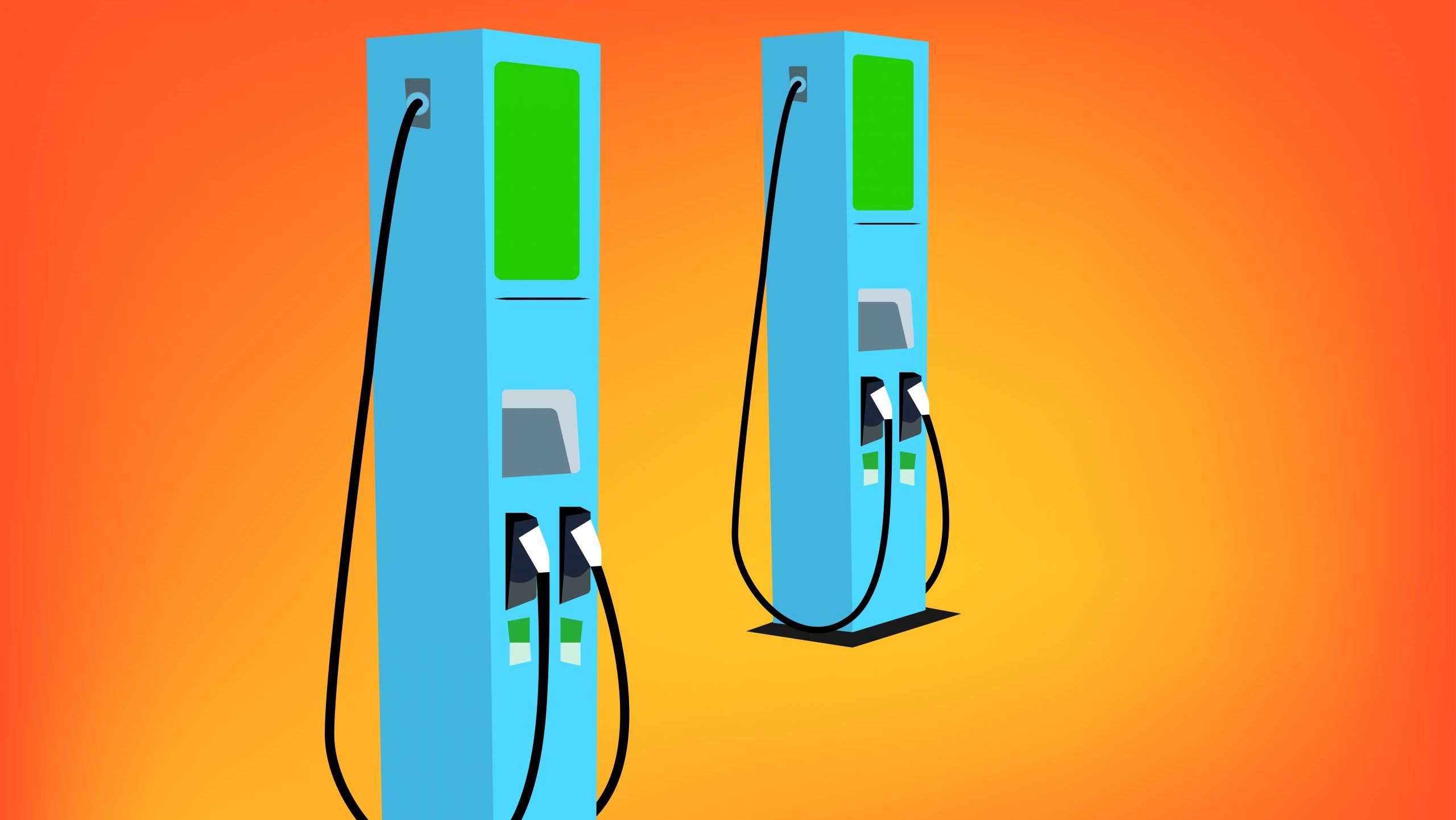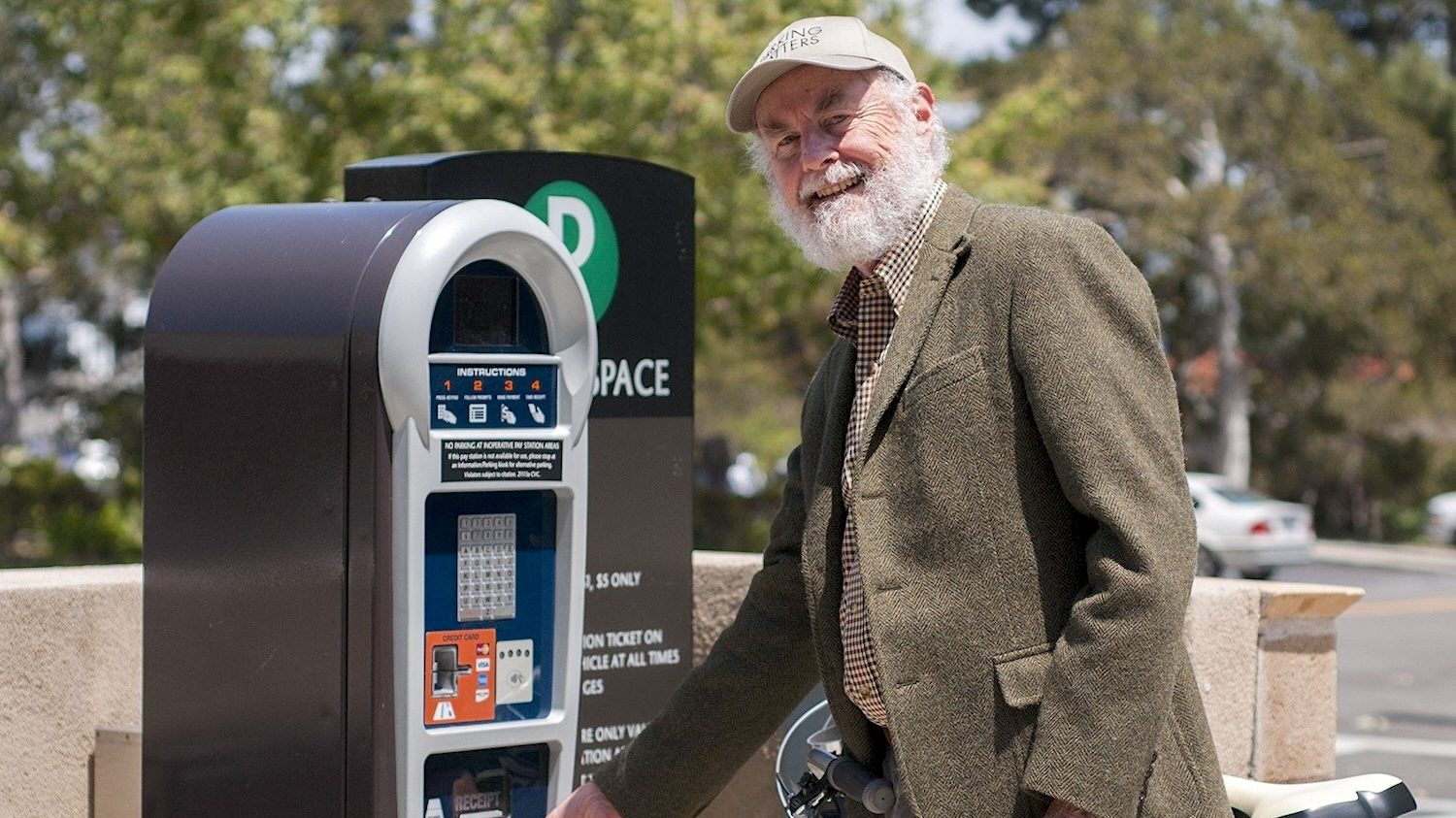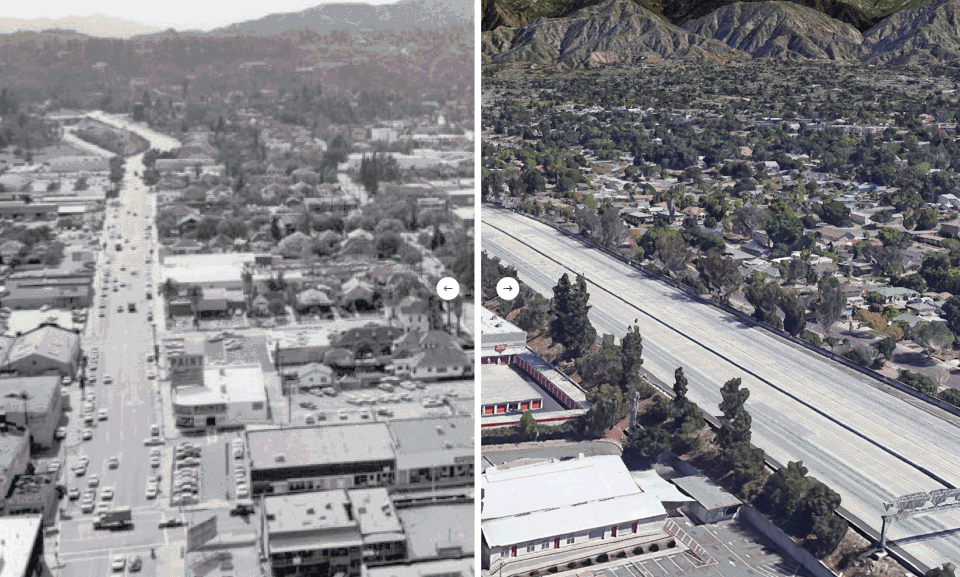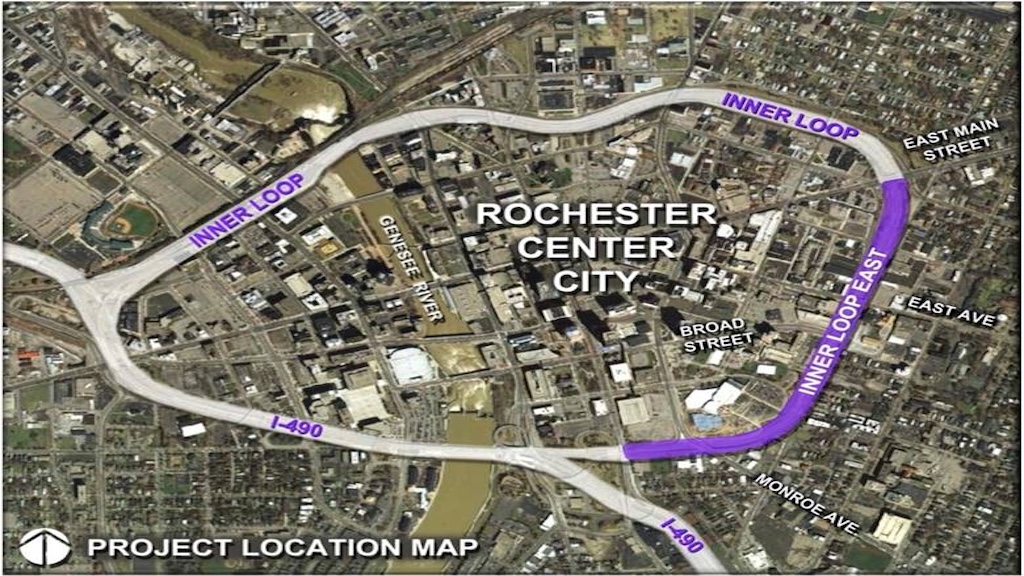Could AVs improve visits to national parks?
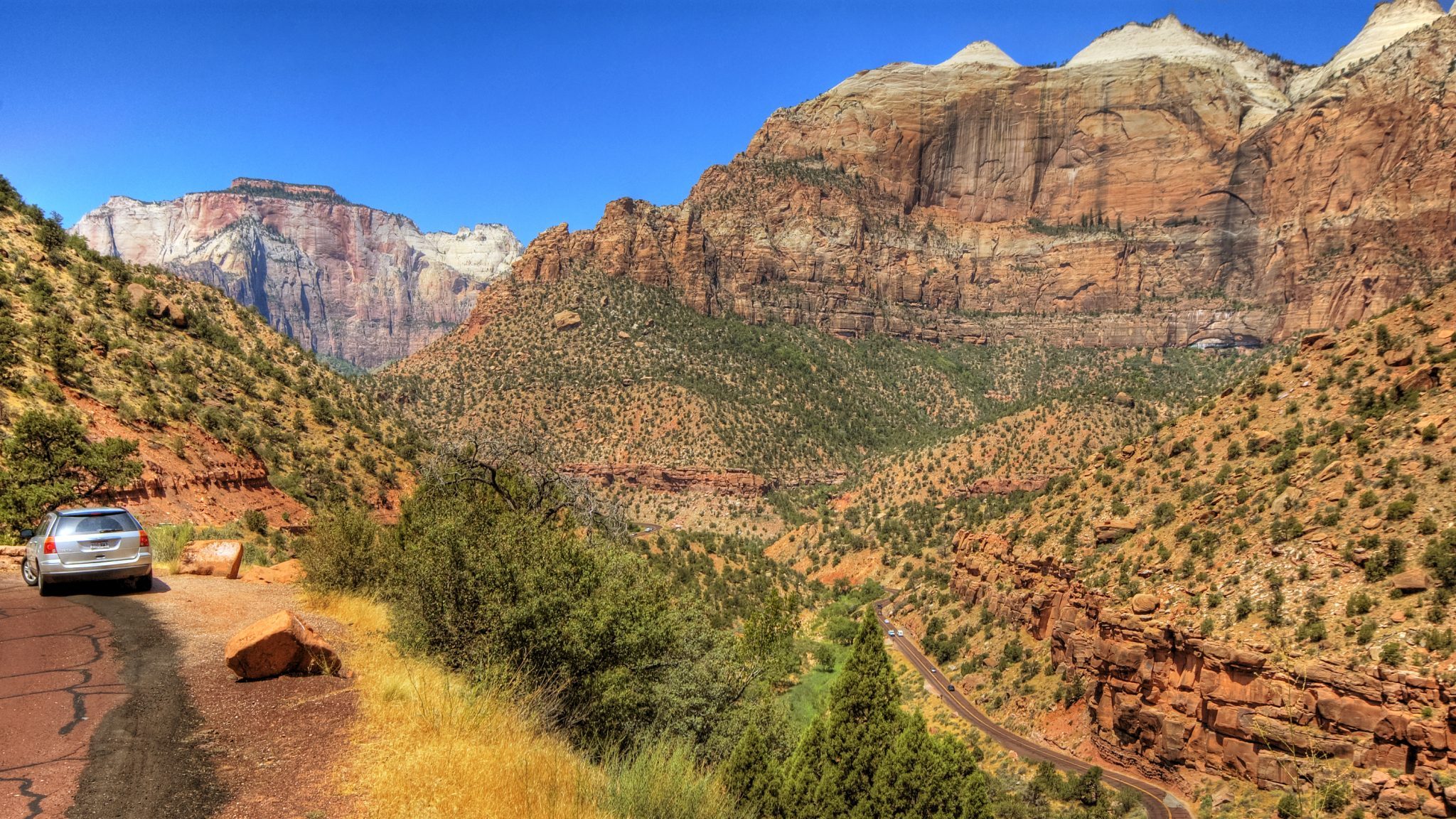
Co-authored by Nicole Enciso, Yichao Gao, and Reed Humphrey
Picture yourself driving through your favorite national park. Imagine the beautiful landscape rolling by outside your car window. Now picture yourself not driving at all.
When we think about the future of autonomous and connected vehicles (AVs), we’re likely considering how our daily commute or trip to the grocery store will be impacted. But hiking or camping could soon change due to self-driving cars as well, as AV technology presents many uncertainties for more rural and destination-based sites.
Addressing those uncertainties is especially important in national parks, where transportation must provide visitor access and mobility while avoiding or mitigating environmental impacts. National parks face high traffic congestion in popular seasons, but their wide distances and dispersed destinations make operating transit difficult. If implemented correctly, fast-progressing AV technology could help the National Park Service (NPS) meet its mobility and climate goals while potentially increasing visitation and reducing traffic congestion for parks across the country.
Many NPS sites are located in states where AV testing or operation is already allowed:
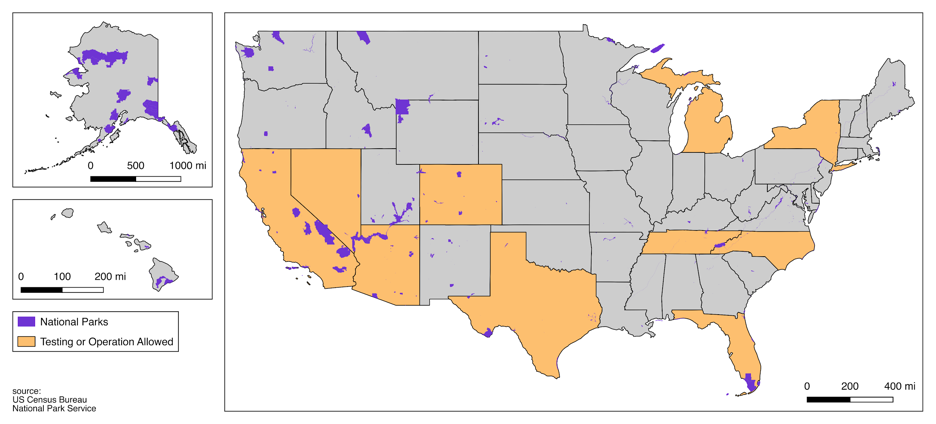
For our practicum project at the USC Price School of Public Policy, we worked with the NPS Washington Support Office Transportation Branch to best prepare its unique transportation system and services for the opportunities AVs present. Our research sought to answer the following questions:
- Will AVs add value to parks?
- What does the NPS need to do to accommodate AVs?
- How would different park types integrate AVs?
Each NPS site is unique, so our case study included five diverse parks to guide and ground our research: Cabrillo National Monument, Joshua Tree National Park, Mojave National Preserve, and Santa Monica Mountains National Recreation Area in California, and Zion National Park in Utah.
For each park, we gathered transportation and visitation data to create an AV characteristic profile, which we then used to evaluate the park’s challenges for implementing autonomous and connected technologies for individual vehicles and transit.
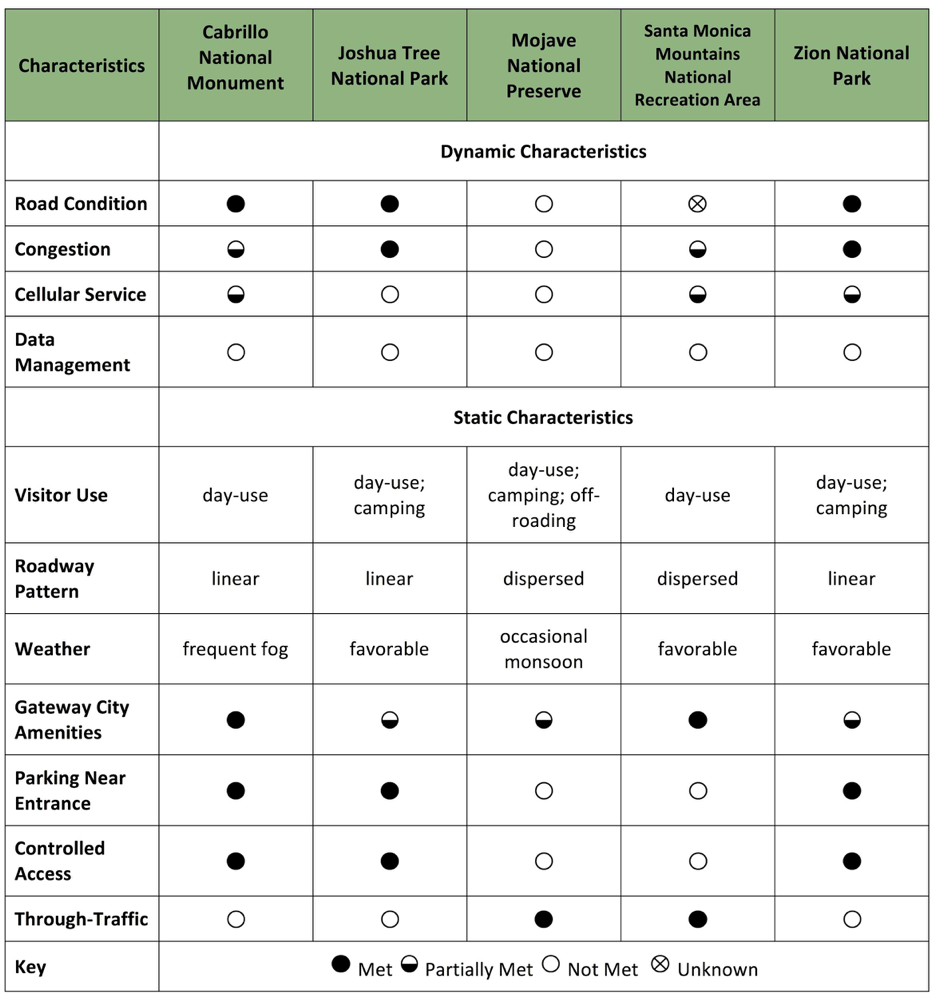
Based on the resulting set of challenges, we walked each park through a decision tree to determine the park’s most fitting end-state scenario, one of three outcomes for how AVs might function in parks. Each of the three scenario types informed our analysis of potential impacts AV technology may have on travel to and within the parks:
- AV Personal Vehicles: All personal AVs are allowed within the park boundary.
- AV Mixed Transit: All personal AVs are allowed within the park boundary, and the park operates an AV transit system.
- AV Restricted Transit: No personal vehicles are allowed within the park boundary (or only at designated parking lots), and the park operates an AV transit system as the primary transportation mode.
The decision tree analysis found Mojave and Santa Monica Mountains most amenable to the AV Personal Vehicles scenario due to the dispersed roadway pattern and lack of controlled access. Joshua Tree was most compatible with AV Mixed Transit as it has high levels of congestion, a linear roadway pattern, and will be starting a transit pilot this year. Cabrillo and Zion were assigned to the AV Restricted Transit scenario because both parks have controlled accessed, linear roadway patterns, and low through-traffic.
The table below shows the steps, such as adding new vehicle charging areas, that these case study parks should take in order to prepare for their individual scenarios.
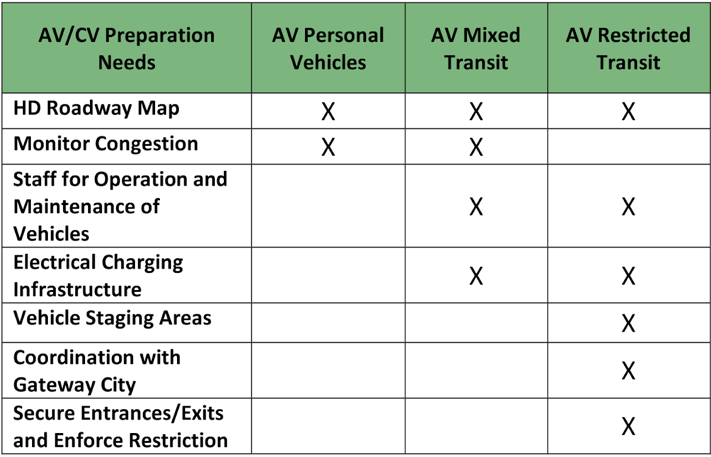
Additionally, our survey informed a separate list of more broad recommendations for the NPS to assist in preparation for and implementation of AV technologies. To prepare for the arrival of AVs, we recommend that NPS:
- Think about how to manage, store, and use big data generated from AVs
- Track state policies to know what parks may be affected by AVs
- Examine internal transportation policies and update as necessary to include AVs
And to implement our recommendations, NPS should:
- Replicate the scenario analysis (characteristic profile, gap analysis, decision tree analysis) for all parks
- Begin a pilot program based on scenario analysis findings
- Consider working with a provider in which partner covers costs, agrees to share data, and recognizes risk-sharing
An autonomous, connected future may not be far away, and it is important that agencies like the NPS continue to research the potential impacts future mobility changes may have on their transportation systems. This research provides a framework within which the NPS can move forward into an uncertain future.
Disclaimer: Views, statements, findings, conclusions, recommendations, and data in this report do not necessarily reflect views and policies of the National Park Service or U.S. Department of the Interior. Mention of trade names or commercial products does not constitute endorsement or recommendation for use by the U.S. government.
